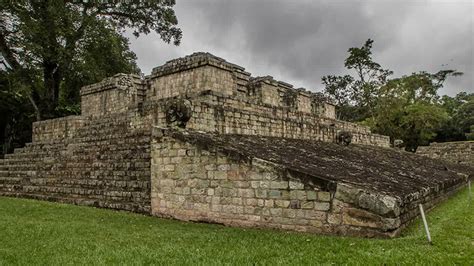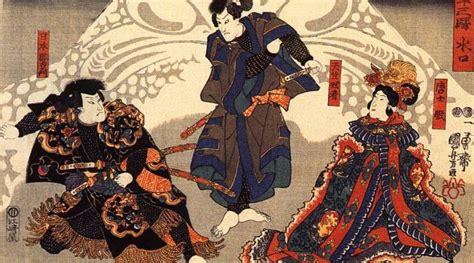Explore the origins, rise, economic influence, and cultural legacy of the Mali Empire in this comprehensive blog post. Learn about its early civilization and decline.
Ancient Mali: Origins and Early Civilization
Contents
The ancient civilization of Mali has a rich and complex history that dates back to around 800 AD. The early inhabitants of this region were the Soninke people, who were part of the larger sub-Saharan African civilization. These early settlers were skilled farmers and traders, and they established a number of thriving communities along the Niger River. Over time, these communities grew in size and complexity, giving rise to the early civilization of Mali.
The early civilization of Mali was characterized by its advanced agricultural practices and expansive trade networks. The Niger River served as a key transportation route for the exchange of goods and ideas, allowing the Malian people to develop a thriving economy and a diverse culture. The civilization also benefited from its strategic location, which allowed it to interact with neighboring societies and adopt new technologies and ideas.
One of the most significant developments in the early history of Mali was the rise of the kingdom of Ghana, which emerged as a dominant power in the region around the 8th century. The Ghana Empire played a crucial role in shaping the Malian civilization and influencing its early political and social structure. The Malian people adopted many of the administrative and agricultural practices of the Ghana Empire, which helped them to build a strong and prosperous kingdom.
Overall, the ancient civilization of Mali was a dynamic and diverse society that thrived due to its advanced agricultural practices, vibrant trade networks, and close interaction with neighboring civilizations. The early Malian people were able to build a prosperous and influential kingdom, which set the stage for the rise of the Mali Empire in the centuries that followed.
The Mali Empire: Rise to Power and Expansion
The Mali Empire was an influential and powerful state in West Africa, known for its impressive rise to power and extensive territorial expansion. At its height, the empire covered a vast area, including parts of present-day Mali, Senegal, Gambia, and Guinea. Its rapid rise to prominence was largely attributed to the dynamic leadership of its early rulers, particularly Sundiata Keita, who laid the foundation for the empire’s growth and prosperity.
The Mali Empire began as a small kingdom established by Sundiata Keita, who is revered as the empire’s founder and first ruler. Through a series of military campaigns and strategic alliances, Sundiata expanded the kingdom’s influence, gradually consolidating power and establishing control over key trade routes in the region. This laid the groundwork for the empire’s subsequent territorial expansion and economic prosperity.
One of the defining features of the Mali Empire‘s rise to power was its strategic control of the trans-Saharan trade routes, which brought wealth and prosperity to the empire. The empire’s control over the lucrative trade in gold, salt, and other goods contributed to its economic strength and enabled further expansion and consolidation of power in the region.
Under the leadership of subsequent rulers, such as Mansa Musa, the empire continued to grow and prosper, reaching its zenith as a dominant force in West Africa. The empire’s expansion and influence extended far beyond its borders, establishing it as a significant player in the broader geopolitics of the region.
Trade and Wealth: Mali’s Economic Influence
The Mali Empire was known for its extensive trade networks and vast wealth, which greatly influenced the economic landscape of West Africa. The empire’s strategic location along the trans-Saharan trade routes allowed it to become a major center for trade, contributing to its immense prosperity and economic influence throughout the region.
At the heart of Mali’s economic power was its control over the lucrative trade in gold and salt. Gold, in particular, was in high demand in North Africa and the Mediterranean regions, while salt was essential for preserving food and sustaining life in the hot climates of the Sahara. Mali’s ability to monopolize these valuable commodities gave it immense economic leverage and solidified its position as a dominant force in the trans-Saharan trade network.
In addition to gold and salt, Mali also traded in other commodities such as ivory, slaves, and agricultural products, further enhancing its economic influence. The empire’s vast resources and wealth allowed it to establish strong economic ties with neighboring states, fostering a thriving network of trade and commerce that extended far beyond its borders.
Moreover, Mali’s economic influence extended beyond the realm of trade. The empire’s wealth enabled it to sponsor impressive architectural projects, promote the arts and scholarship, and invest in the development of its cities, further solidifying its position as a great economic power in the region.
In conclusion, Mali’s economic influence was a key factor in the empire’s prosperity and dominance in West Africa. Through its control of valuable commodities and extensive trade networks, the Mali Empire established itself as a major economic force, leaving a lasting legacy on the economic history of the region.
Religion and Culture: Influence on Mali Society
The religion and culture of Mali society play a crucial role in shaping the identity and values of its people. The dominant religion of the region is Islam, which was introduced through trade and conquest during the 11th century. The Mandinka people, who make up the majority of the population, have adopted Islam as their primary faith, blending it with their traditional animistic beliefs. This fusion of religious practices has created a unique spiritual landscape within Mali, where Sufi brotherhoods and traditional healers coexist alongside modern mosques and madrasas.
Moreover, Mali’s rich cultural heritage is evident in its art, music, and literature. The region is renowned for its intricate textiles, elaborate gold jewelry, and vibrant pottery, which reflect the diverse influences of its ethnic groups. Griots, or oral historians, preserve Mali’s history through storytelling and song, while ancient manuscripts reveal the intellectual achievements of its scholars. These cultural expressions not only enhance the aesthetic beauty of Mali but also serve as a testament to its enduring traditions and resilience.
The influence of religion and culture can also be observed in the daily lives of Malians. From birth to death, important ceremonies and rituals are conducted in accordance with Islamic customs and traditional practices. Marriage, for instance, is a sacred union that involves elaborate festivities and generous displays of hospitality. Likewise, religious holidays such as Eid al-Fitr and Tabaski are observed with fervent devotion, uniting communities in prayer and celebration. This symbiotic relationship between religion and culture reinforces the social fabric of Mali, fostering a sense of unity and belonging among its people.
Furthermore, Mali’s cultural and religious traditions extend beyond its borders to impact the global community. Through its UNESCO World Heritage sites, such as the ancient city of Timbuktu and the Tomb of Askia, Mali has contributed to the preservation of mankind’s collective history. Additionally, its vibrant music and dance have captivated audiences worldwide, earning recognition and influence in the realm of global arts and entertainment. The enduring legacy of Mali’s religion and culture continues to inspire and connect people across continents, reflecting the profound impact of its societal influence.
Decline and Legacy: The Fall of the Mali Empire
After reaching its peak in the 14th century, the Mali Empire began to experience a period of decline. This decline was attributed to a combination of internal strife, external invasions, and economic instability. The once powerful empire started to lose its grip on its territories, which ultimately led to its downfall.
Internally, the Mali Empire faced leadership conflicts and struggles for succession, which weakened the central authority and created divisions within the empire. This internal instability made it vulnerable to external threats from neighboring empires, such as the Songhai Empire, which eventually overtook Mali and contributed to its decline.
In addition to internal strife, the Mali Empire also faced economic challenges. The trans-Saharan trade routes, which had been a major source of wealth and power for the empire, were disrupted by the emergence of new trade routes and the decline of traditional industries. This economic downturn further weakened the empire and hastened its decline.
Despite its decline, the Mali Empire left a lasting legacy in the region. Its culture, traditions, and influence continued to shape the societies that succeeded it. The legacy of the Mali Empire is still evident in the modern-day countries of Mali and Senegal, where its historical sites and artifacts are preserved and celebrated.












